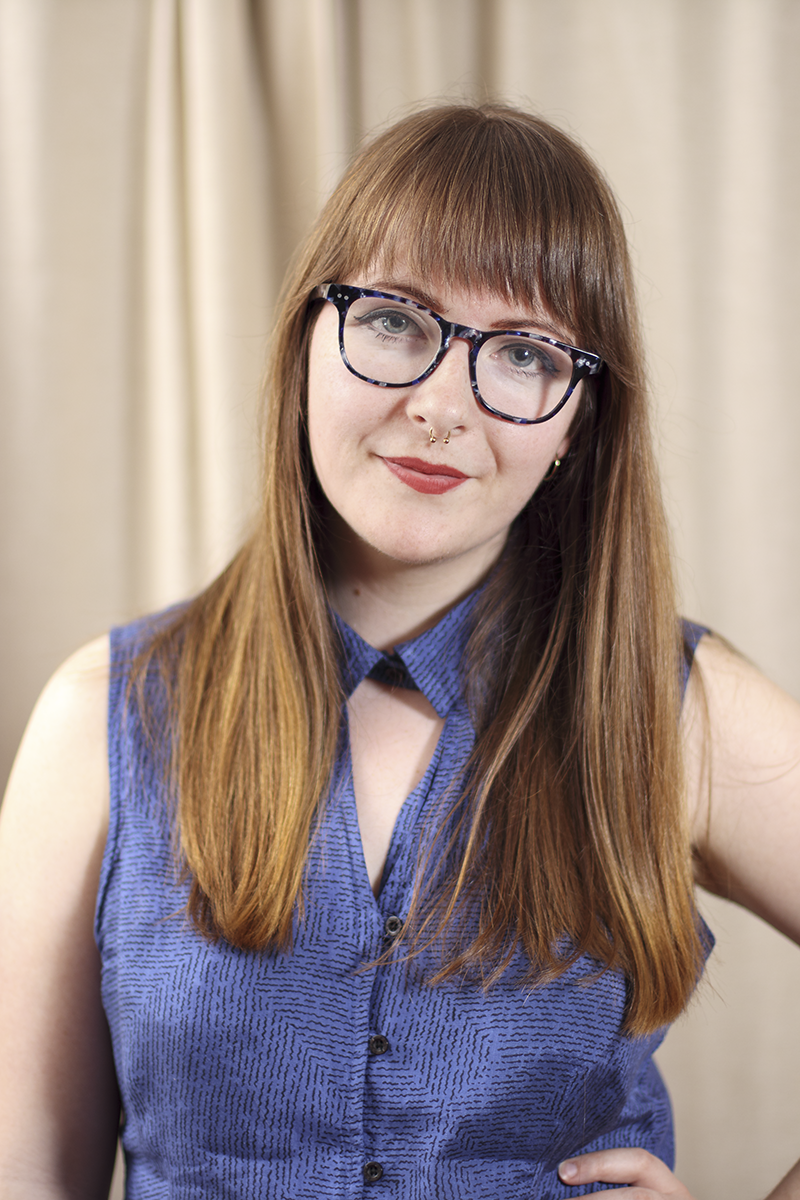Student Profile | Claudia Hopkins

Posted on | Updated
On February 26, the fourth year Interaction Design student will share her hope for health care with more than 400 attendees at Health Talks, an annual speaker series.
On February 26, fourth year Interaction Design student Claudia Hopkins will share her hope for health care with more than 400 attendees at Health Talks, an annual speaker series.
She won the Health Talks Student Content, which invites any BC student to submit an entry for the opportunity to be one of eight Health Talks speakers. Claudia’s winning essay articulated the “love story” between health care and service design.
In addition to wrapping up her second degree at Emily Carr, Claudia works with UBC Continuing Professional Development as an Instructional Designer.
How did you end up studying Interaction Design? Was it always something you wanted to do?
I received a chemical biology degree from McMaster University, but I wanted to do visual science communication. So I came to Emily Carr work on my illustration skills, and I fell in love with design during my Foundation year.
I like science from a zoomed out perspective, where you can see the results, but in research you’re very zoomed in and working at a micro-level.
And what does Interaction Design entail?
Broadly, it’s using technology to connect people. That can include websites and apps, but also designing processes, systems and environments. And everything is technology - even a piece of paper is a way to connect.
It can be confusing because a lot of the jobs interaction designers apply for fall under the umbrella of “product design,” which was traditionally thought of as industrial design, but the definition of what a product is has changed so much.
Some people in my cohort are creating digital products and websites, which is more traditional interaction design, but other students are designing installations and doing design research projects.
How did you get interested in service design? In your Health Talks essay you mention its not very well known in Canada.
I was initially a Communication Design major, and in one class we had to write about a problem and how we would approach it using design. The design intervention I described wasn’t really COMMD, it was service design and my instructor encouraged me to research service design. But it’s hard to read about service design, you need to see and experience it to really understand it.
Then later I switched to Interaction Design, and I took a service design class last year. Service design is very similar to interaction design; it’s a wider, holistic scope around user experience design.
Your grad project is on developing processes to involve patients in creating medical education with UBC Continuing Professional Development, and you’ve previously worked with the Health Design Lab. What led to your interest in health care?
It was a natural progression from science in a way. I took anatomy and physiology courses at McMaster, and I was interested in the relationship between research and health. And then when I started working in science communication, I was trying to explain the biomedical research and how it impacts patients and the health community.
I work on e-learning with UBC, so we create online resources for medical doctors and health care professionals. That means we receive content from our experts, and then we take that content and make it more interactive and add visuals. Those resources are designed for physicians, not patients, but what physicians learn has an affect on their patients’ care. So my project is looking to patients and seeing if the topics we’re creating resources around really address their concerns, or if they’re just topics that physicians think are important.
In your winning Health Talks essay you wrote “some of the best design, especially service design, is invisible.” Can you tell me more about that?
It’s just that we do things without noticing we do them. Sometimes design is just the way people make you feel throughout your journey; it’s invisible but still has an impact. It’s embedded in how we use services, like what environmental nudges make you want to get a coffee at Loafe versus Mini Loafe.
You also talk about how health care is risk-averse, whereas in service design, you benefit from taking risks and learning from rapid prototyping and experiments. How do you resolve that?
The hard thing about design is we don’t know the solution at the outset, but most organizations want to budget around a solution. It’s challenging.
I think it’s about taking the process outside of the context. Like, we can prototype and test things, but not with actual patients. That’s not doing it in the most ideal way, but we can still find ways to test our ideas without unnecessary risk.
What do you hope the Health Talks audience will take away from your talk?
I hope it will make them more open to new ways of working, and willing to create more partnerships with designers. And help them to recognize that design isn’t only about creating visuals.
Get to know some of our other Emily Carr students, like interdisciplinary artist Sinead Penner and painter Eric Tkaczyk